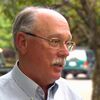Transportation Blueprint: Difference between revisions
No edit summary |
No edit summary |
||
| Line 94: | Line 94: | ||
vehicles. The vehicles can be assembled and maintained at facilities near their operation, thereby providing local jobs, supporting the local economy, | vehicles. The vehicles can be assembled and maintained at facilities near their operation, thereby providing local jobs, supporting the local economy, | ||
reducing shipping and logistics costs. | reducing shipping and logistics costs. | ||
Revision as of 23:43, December 5, 2021
- Authors



 [[File:|x100px|link=Tim Smith]]
[[File:|x100px|link=Tim Smith]]


 [[File:|x100px|link=Cory Marshall]]
[[File:|x100px|link=Cory Marshall]]

{{{summary}}}
Introduction
A SuperCluster is a multi-city, multi-stakeholder collaboration organized around common project objectives and shared solutions. Committed cities/communities and partners jointly tackle shared issues, develop and deploy shared solutions to create economies of scale.
The Transportation SuperCluster (TSC) was formed and is managed by forward looking municipalities interested in preparing their infrastructure for new technologies that look set to provide better, more equitable services at lower cost. The TSC mission is to:
- Explore opportunities provided by first and last mile vehicles including shared, low speed and autonomous.
- Examine opportunities for building vibrant communities around transfer points and mobility hubs.
- Clarify how vehicles and hubs can play a role in the last mile delivery of packages and other freight.
- Collaborate with diverse teams developing new and advanced transportation models and environmental sensors that allow both the prediction of probable outcomes and the measurement of actual outcomes of introducing these technologies.
- Work with teams implementing a smart CityWeb to ensure the portability and interchangeability of solutions
- Propose regulatory and policy changes that support the safe deployment of these technologies.
This blueprint will address the range of opportunities offered by new mobility-related technologies. We will provide data about the readiness of these technologies and how we believe they will influence city and community planning offering potential short and long term improvements in safety, equity, climate, employment and congestion.
We want to thank the National Institute of Standards and Technology (NIST) for their leadership in establishing the Global City Teams Challenge. By pulling together city, academic and industry leaders into action clusters and then combining synergistic action clusters into SuperClusters NIST has launched a wave of innovation that will bring lasting benefit to urban life in the US and abroad. In this blueprint we outline bold steps that can benefit mobility in our communities. We have focused on improving first and last mile connections for transit users and last fifty feet for freight delivery. We are interested in addressing transport issues between urban environments in a future version of the blueprint.
Pilot Programs for AV Technologies
In the last few years we have seen three significant shifts in urban mobility,
- sharing,
- electrification, and
- autonomy.
While this document is nominally focused on Autonomous Vehicles many of the desired community benefits can be gained by implementing first and last mile solutions with a shared electric fleet. Further, by running pilots of shared electric fleets that are autonomous ready or partially autonomous we will gain considerable insight into how to deploy autonomous vehicles when the technology is ready for full operation.
The first and last mile pilots are intended to lead cities to a future vision of urban mobility. These pilots will provide considerable learning and inform the pilots that follow.
The first and last mile transportation system should provide:
- Safe pedestrian pathways
- Safe cycling paths
- Urban Speed Vehicles (12mph), buses, cars and specialty vehicles and in this way
- Significantly reduce fatalities because of reduced speed
- Significantly reduced parking space requirements because of vehicle sharing
- Reduced rider cost because of autonomy
The team will start with simple demonstrations that evolve to more complex solutions as understanding is gained. A sample set of demonstrations to start the process could be:
Transit Station to Company Campus:
As an example of transit to company campus a number of large companies in the Portland area are served by TriMet stations that are somewhat distant from campus (such as Nike and Intel). This limits the use of transit unless the company supports a bus service to bridge the gap from transit station to campus (as is done by WeDriveU for Nike). We would propose this function be performed by a connected on demand electric bus transitioning to an autonomous bus which could transport employees from the transit station to the industrial campus and may also be used on campus to deliver passengers to selected buildings.
The scope of the pilot could include access badge readers and/or other systems such as facial recognition. This would assure all riders had appropriate access to campus. Unidentified passengers could be identified and connected to the company security officer for access or denial of access to campus.
Transit Station to College Campus:
Like the previous pilot but with lower identification requirements due to the open nature of campuses, a similar transit station to campus pilot can be started with an electric bus fleet that will evolve over time into an autonomous electric fleet. If successful, the technology could have direct use for many locations.
Transit Station to Public Place (e.g. shopping mall):
Unlike the more homogeneous employee and student pilots, a transit station to public place pilot is more like regular bus service and provides the opportunity to begin development of connected systems to assure passenger safety and reduce rider anxiety. Such topics as rider identification (including ID card, facial recognition technology, biometric ID, etc.) should be investigated. In-vehicle monitored cameras may be used.
Residence to Transit Station:
For this pilot we could use a bus or car. If the bus is relatively small and picks up only passengers in a local neighborhood they may feel safe. With a car which carries 2, 4, or 6 passengers and only collects passengers at one stop this issue is removed.
Electric Vehicle Charging Infrastructure
We plan to work with Forth Mobility on demonstration projects to advance electric, smart and shared transportation. We plan to work with Portland General Electric Company (PGE) and their efforts to accelerate transportation electrification.
Maintenance and System Operation
Urban Speed Electric Vehicles like Mobility Cubed’s World Bus are constructed with less than 300 major parts, compared to over 2,500 parts for a typical gasoline engine vehicle. In addition, these vehicle’s assembly techniques are significantly less complicated than typical gasoline engine vehicles. The small bill of materials coupled with streamlined assembly processes enable Mobility Cubed to deploy relatively small (5,000 unit) volume runs of vehicles. The vehicles can be assembled and maintained at facilities near their operation, thereby providing local jobs, supporting the local economy, reducing shipping and logistics costs.
